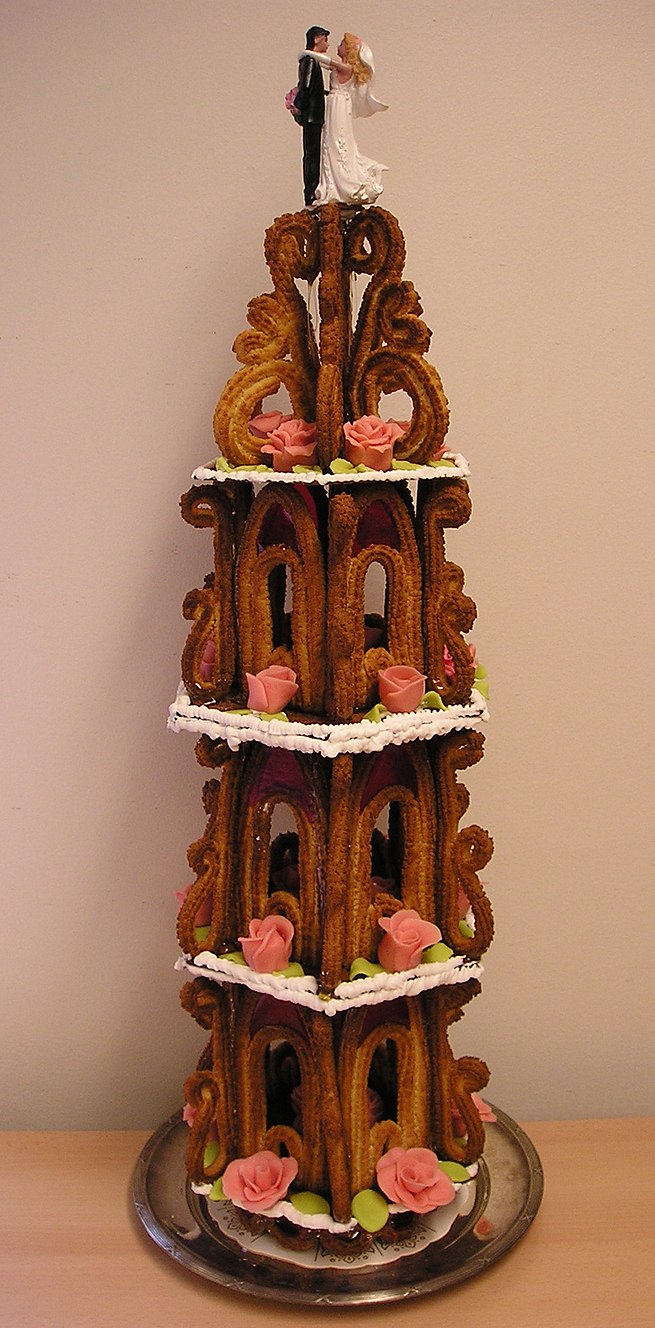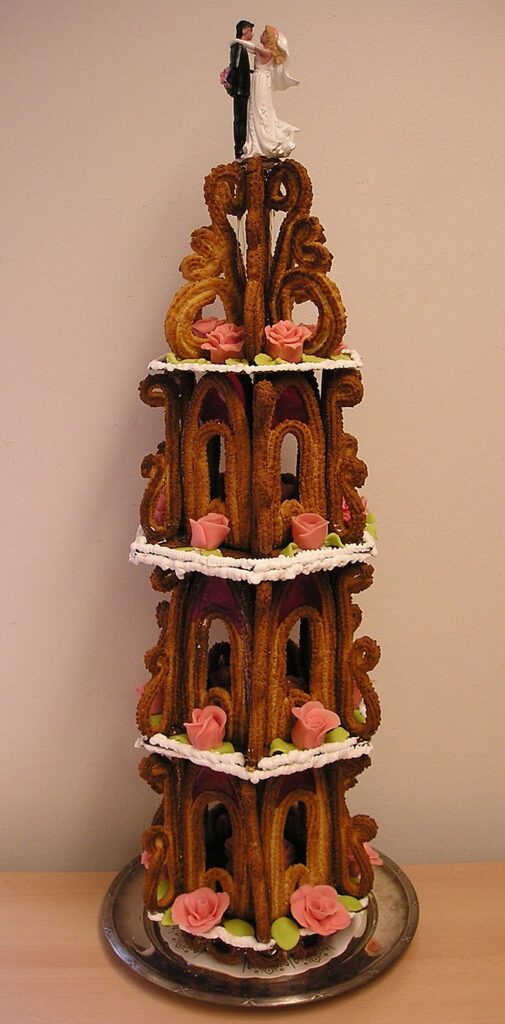
Main Difference
The main difference between Confectionery and Pastry is that the Confectionery is a prepared foods made with a lot of sugar and Pastry is a name given to various kinds of baked products.
-
Confectionery
Confectionery is the art of making confections, which are food items that are rich in sugar and carbohydrates. Exact definitions are difficult. In general, though, confectionery is divided into two broad and somewhat overlapping categories, bakers’ confections and sugar confections.Bakers’ confectionery, also called flour confections, includes principally sweet pastries, cakes, and similar baked goods.
Sugar confectionery includes candies (sweets in British English), candied nuts, chocolates, chewing gum, bubble gum, pastillage, and other confections that are made primarily of sugar. In some cases, chocolate confections (confections made of chocolate) are treated as a separate category, as are sugar-free versions of sugar confections. The words candy (US and Canada), sweets (UK and Ireland), and lollies (Australia and New Zealand) are common words for the most common varieties of sugar confectionery.
The confectionery industry also includes specialized training schools and extensive historical records. Traditional confectionery goes back to ancient times and continued to be eaten through the Middle Ages into the modern era.
-
Pastry
Pastry is a dough of flour, water and shortening (solid fats, including butter) that may be savoury or sweetened. Sweetened pastries are often described as bakers’ confectionery. The word “pastries” suggests many kinds of baked products made from ingredients such as flour, sugar, milk, butter, shortening, baking powder, and eggs. Small tarts and other sweet baked products are called pastries. The French word pâtisserie is also used in English (with or without the accent) for the same foods. Common pastry dishes include pies, tarts, quiches and pasties.Pastry can also refer to the pastry dough, from which such baked products are made. Pastry dough is rolled out thinly and used as a base for baked products.
Pastry is differentiated from bread by having a higher fat content, which contributes to a flaky or crumbly texture. A good pastry is light and airy and fatty, but firm enough to support the weight of the filling. When making a shortcrust pastry, care must be taken to blend the fat and flour thoroughly before adding any liquid. This ensures that the flour granules are adequately coated with fat and less likely to develop gluten. On the other hand, overmixing results in long gluten strands that toughen the pastry. In other types of pastry such as Danish pastry and croissants, the characteristic flaky texture is achieved by repeatedly rolling out a dough similar to that for yeast bread, spreading it with butter, and folding it to produce many thin layers.
-
Confectionery (noun)
Foodstuffs that taste very candies, sweetmeats and confections collectively.
-
Confectionery (noun)
The business or occupation of manufacturing confectionery; the skill or work of a confectioner.
-
Confectionery (noun)
A store where confectionery is sold; a confectioner’s shop.
-
Pastry (noun)
A baked food group which contains items made from flour and fat pastes such as pie crust; also tarts, bear claws, napoleons, puff pastries, etc.
“That pastry shop sells not just pastries, but all kinds of baked goods.”
-
Pastry (noun)
The type of light flour-based dough used in pastries.
-
Pastry (noun)
The place where pastry is made.
-
Pastry (noun)
The act or art of making pastry.
-
Confectionery (noun)
sweets and chocolates considered collectively
“a confectionery company offering hand-made chocolates”
“items of confectionery”
-
Confectionery (noun)
a shop that sells sweets and chocolates
“chocolate and fudge are made daily at the village confectionery”

